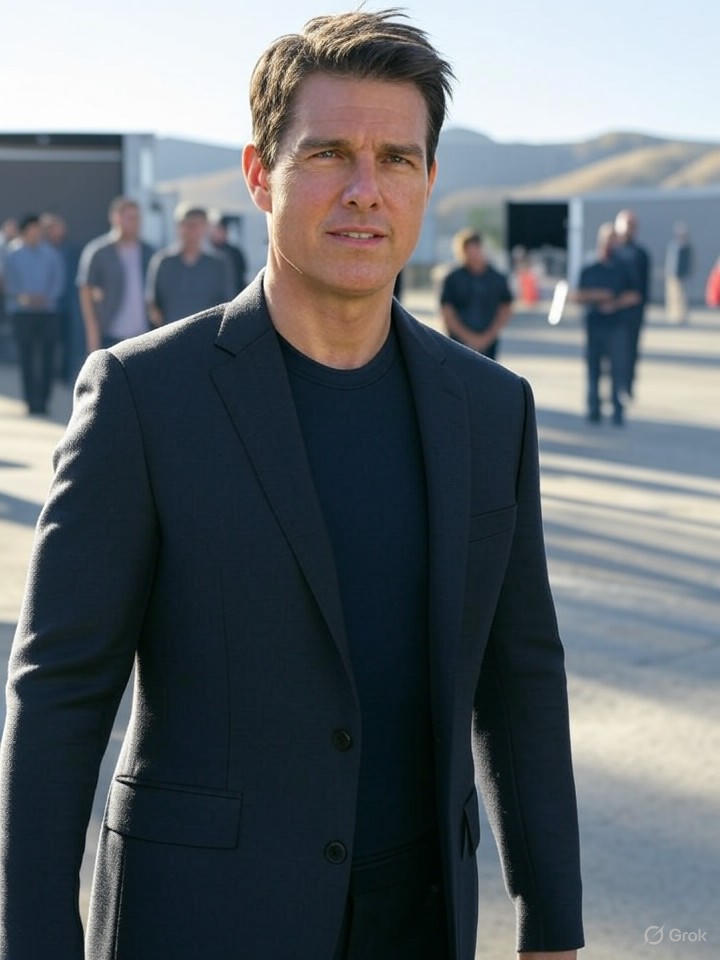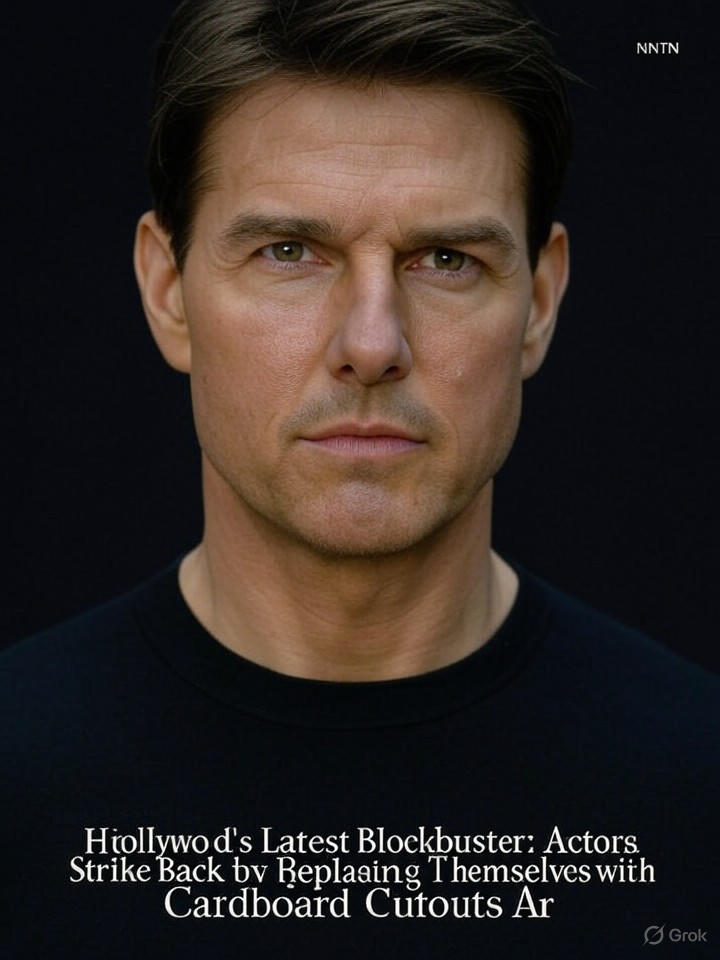In a plot twist that even the most convoluted Marvel script couldn't conjure, Hollywood's A-listers have decided to fight fire with flatness. Frustrated by the rise of AI-generated screenplays that make 'Sharknado' look like Shakespeare, stars are ditching their multi-million-dollar salaries for something far more economical: cardboard cutouts of themselves. Tom Cruise, ever the daredevil, kicked off the trend by sending a life-sized paper version of himself to the set of the next 'Mission: Impossible' installment, complete with a sticky note reading, 'Handle with care – no stunts required.'
The movement, dubbed 'Cutout Revolution,' has gained traction faster than a viral TikTok dance. Sources close to the actors claim that these two-dimensional stand-ins deliver performances with unparalleled emotional depth. 'My cardboard self doesn't need method acting,' quipped one anonymous celebrity. 'It just stands there, stoic and unchanging, much like my ex's feelings during our divorce proceedings.' Even directors are on board, praising the cutouts for never demanding script changes or exotic craft services.
Not to be outdone, Scarlett Johansson has replaced herself in upcoming projects with a cutout that's reportedly more expressive than her role in 'Lost in Translation.' 'AI thinks it can write better than humans? Well, watch this plywood perform Shakespearean soliloquies,' she allegedly tweeted, though her publicist insists it was the cutout typing. Industry insiders speculate this could slash production budgets by 90%, leaving more money for important things like executive bonuses and overpriced lattes on set.
Critics, however, are divided. Some hail it as a return to the golden age of cinema, reminiscent of silent films where actors conveyed emotion through exaggerated gestures – or in this case, none at all. 'It's genius,' raved a film blogger. 'Finally, a performance that's literally stiff and unyielding, capturing the essence of modern blockbusters.' Others worry about the implications for up-and-coming actors, who might now compete with their own laminated headshots for roles.
As the strike spreads, prop departments across studios are working overtime, churning out cutouts faster than conspiracy theories on social media. Rumor has it that even animated films are getting in on the action, with Pixar considering cardboard versions of their CGI characters to cut costs. 'Why render in 3D when 2D does the trick?' mused a studio exec, probably while counting his savings.
But not everyone's laughing. AI scriptwriters – or rather, the programmers behind them – are firing back with digital countermeasures. One rogue algorithm has already generated a screenplay where cardboard cutouts come to life and overthrow their human counterparts, titled 'Pulp Fiction: The Flat Edition.' Hollywood waits with bated breath to see if this papery protest will fold under pressure or stand tall as the new norm.
In the end, this cardboard coup might just prove that in the battle against artificial intelligence, the best weapon is something utterly artificial and utterly unintelligent. As one cutout silently 'proclaimed' on set: nothing. And perhaps that's the most profound statement of all in Tinseltown's ongoing saga of man vs. machine.

